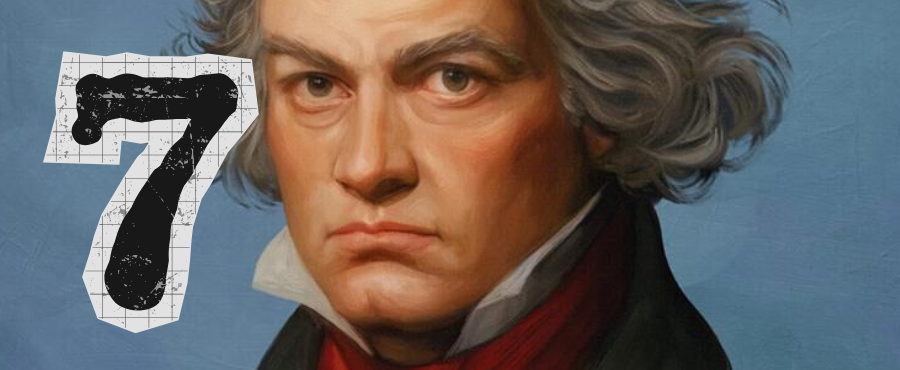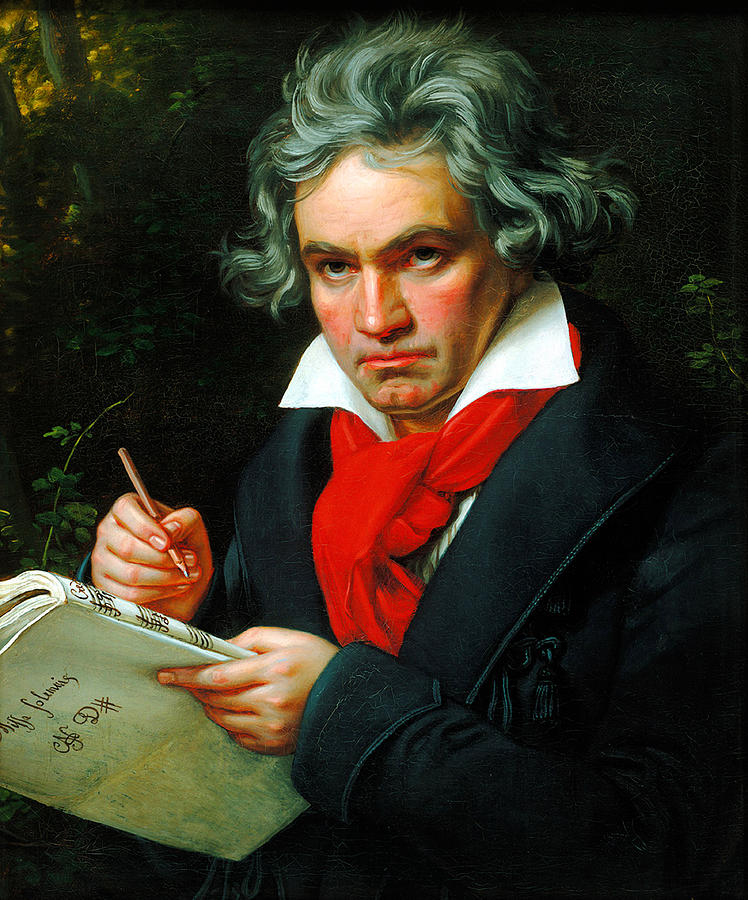
Ludwig van Beethoven’s Symphony No. 7 in A Major, Op. 92 stands as one of the most rhythmically compelling and emotionally expansive works in the orchestral repertoire. At once jubilant and somber, structured yet full of wild energy, the Seventh is often referred to as “the apotheosis of the dance,” a phrase famously coined by Richard Wagner. But what makes this symphony such a standout? To fully appreciate its power, let’s explore Beethoven’s life at the time of its composition, the inspiration behind the work, its formal structure, and what to listen for when experiencing it in concert.

By the time Beethoven composed his Seventh Symphony in 1811–1812, he was already a towering figure in European music and increasingly isolated by his encroaching deafness. Born in Bonn in 1770 and later based in Vienna, Beethoven's career spanned the tumultuous transition from Classical restraint to Romantic passion. He was fiercely independent, often described as a revolutionary both politically and musically. His early fame as a virtuoso pianist gave way to recognition as one of the most innovative composers of his time.
Yet the period surrounding the Seventh was one of considerable personal struggle. His hearing loss had become profound, cutting him off from the very sounds he was writing. He had no steady income and often lived in difficult circumstances. Yet, ironically, this was also one of his most creatively fertile periods. Alongside the Seventh, he composed the Piano Trio Op. 97 (“Archduke”) and was sketching ideas for the Ninth Symphony and the Missa Solemnis.
Beethoven composed his Seventh Symphony while taking a restorative trip to the Bohemian spa town of Teplice (now in the Czech Republic), hoping to improve his health. But Europe at the time was consumed by the Napoleonic Wars. The symphony premiered in December 1813 at a charity concert for wounded Austrian and Bavarian soldiers following the Battle of Hanau. It was a benefit for those injured in war and Beethoven dedicated the music to this noble cause.
The performance was a great success. The Allegretto (second movement) was so well received that it had to be encored immediately. Many contemporaries heard in the symphony a kind of triumphant national spirit, and its rhythmic drive may reflect the martial rhythms of military bands and marching troops. Yet rather than depict war directly, the symphony seems to dance around the idea of fate—offering vitality, sorrow, defiance, and joy in turn.
Beethoven’s Seventh is in four movements and typically lasts around 35–40 minutes. Each movement is saturated with rhythmic energy. Almost every bar pulses with dance-like momentum. Let's dive into each movement individually.
The symphony opens with a slow, stately introduction—the longest of any Beethoven symphony. It begins with a broad A major chord and unfolds in grandeur, almost ceremonial. But soon, the music transitions into the Vivace, a whirlwind of rhythmic energy driven by dotted rhythms. The dance begins in earnest here, with the main theme bouncing along in a buoyant 6/8 meter. Listen for how Beethoven builds tension and release through repetition and expansion of motifs—an approach that was radical for its time.
🎧 What to listen for: The way Beethoven develops the main theme through subtle variations. There’s an almost hypnotic energy to the constant forward motion, like a dance you can’t quite stop once it starts.
Perhaps the most beloved movement of the symphony, this Allegretto is often performed separately. It is not slow, but deeply solemn, beginning with a haunting ostinato in the lower strings. A poignant melody emerges above it, passed between woodwinds and violins. Though minor in key, it doesn’t wallow in sadness. Instead, it has a quiet dignity and a sense of inevitability.
🎧 What to listen for: The layered textures and the contrast between minor and major tonalities. Notice how the melody seems to “breathe” through dynamics and instrumentation.
This scherzo is rambunctious, fast, and full of surprises. It barrels forward with explosive energy and sudden silences. The trio section, unusually repeated twice rather than once, is a more lyrical moment, quoting an Austrian pilgrims’ hymn.
🎧 What to listen for: The sudden shifts in character and dynamic. The repetition of the trio is rare. Beethoven seems to want us to linger in its more contemplative world before diving back into the chaotic energy of the scherzo.
The finale is a tour de force of motion and excitement. It’s a frenzy of syncopated rhythms and swirling scales, capped by a relentless drive to the finish. This is Beethoven at his most electrifying: a conclusion that feels both wildly exuberant and intensely focused.
🎧 What to listen for: The headlong rush of the main theme and the astonishing harmonic modulations that keep the momentum alive. The final minutes are a sprint, with every section of the orchestra pushed to the limit.
Throughout the symphony, rhythm—not melody—is the primary source of identity and propulsion. Almost every movement is defined by a persistent pulse. In that way, the whole symphony really does feel like a collection of dances: from the stately procession of the opening to the rustic joy of the finale. Richard Wagner’s description of the Seventh as “the apotheosis of the dance” isn’t just poetic, it’s accurate.
Beethoven’s Symphony No. 7 is a paradox: written by a man increasingly deaf and isolated, during a time of war, it nonetheless radiates life, movement, and triumphant energy. It’s a reminder that great art often emerges not despite adversity, but because of it.
Whether you're a first-time listener or a seasoned symphony-goer, Beethoven’s Seventh offers something profound: the power of rhythm to speak beyond words, the ability of music to stir both heart and body, and the enduring spirit of a composer who refused to be silenced.
🎶 Curious to experience it live? Join conductor Kalena Bovell and the musicians of the Redlands Symphony on Saturday, September 6th at 7:30PM for FINDING JOY. Get your tickets here.